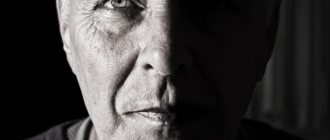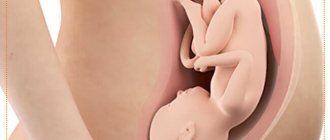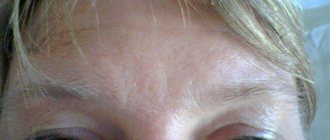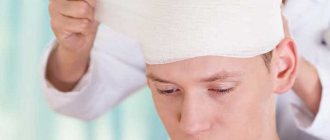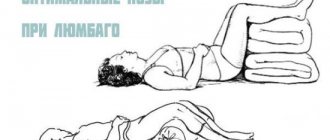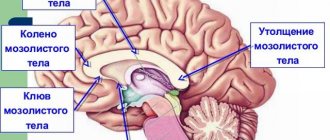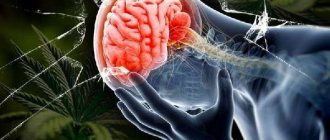31.08.2018
The lower jaw is shaking.
Tremor of the lower jaw in a dog Posted April 02, 2008 - 16:36
Hello! Our grandfather dog is a 17-year-old red spaniel. He still loves and walks a lot, he runs great with me on runs, as his extensive hunting experience says. It’s true that he hasn’t heard practically anything for 1.5 years, but this doesn’t stop us from communicating with gestures, and he understands everything at first sight. An excellent appetite, even too much, with age he began to want to eat constantly, at first we succumbed to his pitiful eyes and he gained weight, but gradually we selected a diet and regime for him and he returned to normal again. I’m even afraid to remember about the illnesses he suffered earlier - he was torn by dogs several times in the spring (he left his testicles there, but still shows a weakness for twigs), an injury to his hind leg. The last time I had tests was 1.5 years ago, the doctors said that I had a weak heart. About a year ago my jaw began to tremble for the first time. In general, when he gets very nervous, he shakes like a leaf (for example, when he sees a hospital), and his jaw also starts to shake a little. The jaw trembles finely when open. He yawns and she hangs there and shakes. She licks her lips and starts shaking. He’s had bad breath for about 3 years now, but his teeth don’t seem to hurt, he eats everything without caution, you can play with a stick. Is your jaw trembling more and more? How can I help him?
#advertising Naughty Dog
Posted 02 April 2008 - 16:37
Posted 03 April 2008 - 13:22
This is age related! Be glad that he was a jig until he was 17 years old and the only thing that bothers him is the jaw tremor - this is not the worst thing and most likely manifests itself due to nervousness - so you don’t injure him in vain!
Posted 03 April 2008 - 23:32
Sorry for interfering with someone else's topic. similar question. We will be 14 this summer. Sometimes (not often) the lower jaw twitches spontaneously (this also usually happens when trying to yawn). But for us it started in the fall, a few days after treatment for piroplasmosis (apparently, this is a complication). This twitching does not seem to progress and does not bother the dog. Should we not worry too? Or could there be problems in our case? Thank you!
Posted 04 April 2008 - 11:31
Sorry for interfering with someone else's topic. similar question. We will be 14 this summer. Sometimes (not often) the lower jaw twitches spontaneously (this also usually happens when trying to yawn). But for us it started in the fall, a few days after treatment for piroplasmosis (apparently, this is a complication). This twitching does not seem to progress and does not bother the dog. Should we not worry too? Or could there be problems in our case? Thank you!
Jaw tremor - this could be neurological - if the age is young - this happens in epileptics (with chorea) - but in addition to the jaw there are many other symptoms - when the underlying disease is treated - everything goes away!
In old age, in dogs, this is usually of a functional nature - that is, the muscles and joints are getting weaker, and the nervous system is not getting any younger - there is no special treatment here (pyraplosmosis is unlikely to have an effect) - sometimes the tremor can be so strong. that dogs cannot eat liquid food - then again, sometimes sedatives help - for example, veterinary Fitex or Novopassit honey. But this rarely happens in dogs anymore!
And just remember old people - dogs’ bodies age the same way - only in a shorter time!
Sent 14 August 2010 - 12:10
Good afternoon I apologize for the intrusion. My dog also has a similar problem.
Prevention of tremor in adults
With chin tremor in children, if all the doctor’s recommendations are followed, the prognosis is favorable - in a few months the symptoms will disappear.
If no improvement is noted after 3 months and tremors appear without any external stimuli, then you should consult a doctor and conduct a more thorough examination - it is likely that the symptom indicates more serious neurological disorders. If we talk about adults, then when tremor is detected, it is also important to visit a neurologist, unless we are talking about age-related tremor. The prognosis will depend entirely on the identified pathology, but even in the simplest cases, tremor can cause complications such as problems in social and labor adaptation due to trembling of the chin, limbs and body.
In most cases, the treatment of tremor is the prescription of symptomatic therapy in order to reduce the manifestation of movement disorders. If the tremor is mild and does not interfere with daily activities, you can temporarily postpone treatment. Body tremors in such a situation can be significantly reduced by abstaining from triggers such as caffeine and stress, as well as by maintaining a healthy lifestyle and getting enough sleep. However, doctors often recommend starting treatment for tremor in the early stages, since in the future, without treatment, it can quickly progress.
As a rule, to reduce tremors in the hands, head and other parts of the body, drugs from the following groups are prescribed:
- beta blockers,
- anticonvulsants,
- botulinum toxin injections, etc.
In severe cases, surgical treatment is resorted to.
Beta blockers: propranolol, atenolol, metoprolol and others are most often prescribed for the treatment of essential tremor. These remedies are widely known for treating high blood pressure (hypertension) and heart disease, but also help reduce body tremors. Typically, 50-70% of people with tremor report that their symptoms have improved since treatment began. Possible side effects of beta blockers:
- nausea;
- dizziness;
- cold hands and feet;
- impaired potency in men.
These drugs are not suitable for people with diabetes, bronchial asthma, or certain types of arrhythmia.
Anticonvulsants are also widely used in the treatment of essential tremor, as well as epilepsy. These include: primidone, topiramate, gabapentin and other drugs. If these drugs alone do not help, you may be prescribed a combination of them. Although effective, the drugs are often poorly tolerated, causing low blood pressure, drowsiness, and nausea.
Diazepam-type sedatives, for example, clonazepam, alprazolam, lorazepam and others, are prescribed in cases where the combination of the above methods does not help. Sedatives can help relieve tremors by reducing the anxiety that often worsens body tremors. The disadvantages of these drugs are side effects: drowsiness and addiction.
Botulinum toxin is used when the drugs described above are not effective. Botulinum toxin is injected directly into the muscles subject to tremor and, by blocking the transmission of nerve impulses, relaxes them. Botulinum toxin is a strong poison, but in small doses it is not dangerous to health. Botulinum toxin has the greatest effect on tremor caused by dystonia.
Sometimes pathological tremor can be so severe that it noticeably interferes with normal life and does not respond to drug treatment. Then they decide whether to perform a surgical operation.
Deep brain stimulation is a completely reversible, minimally invasive operation that involves inserting one or more electrodes (thin metal needles) into a specific part of the thalamus (a part of the brain). The electrodes are connected to a pulse generator (a device similar to a pacemaker), which is placed under the skin on the chest.
During deep brain stimulation, various types of anesthesia are used to make the operation painless. Features of anesthesia include the need to remain conscious most of the time, so that surgeons can ensure the correct installation and operation of the generator.
Possible side effects of deep brain stimulation:
- surgical infection;
- speech disorder;
- tingling;
- cerebral hemorrhage;
- stroke;
- complications of anesthesia.
However, recent studies have shown that deep brain stimulation is a relatively safe procedure. Some side effects can be avoided by adjusting the operating mode of the pulse generator.
A thalamotomy to treat tremors involves making a small hole in the thalamus, the same part of the brain where deep stimulation is performed. This procedure has been proven effective in treating tremor. Deep brain stimulation is often preferred over thalamotomies because the procedure is completely reversible and usually has fewer side effects.
Possible side effects of thalamotomy:
- disorientation in time and space;
- thinking disorders;
- disturbances in speech and body balance;
- cerebral hemorrhage;
- infection;
- paralysis.
In newborns who are not yet responsible for coordinating movements, tremor can appear in response to any internal or external stimulus. At the time of irritation and crying, tremor of the chin of a baby under 3 months is a normal phenomenon. In any case, any occurrence of tremor should be reported to the child’s pediatrician. If the baby is older than 3 months, then damage to the nervous system becomes obvious and requires examination.
Tremor in a child
With tremors in newborns, trembling of the chin and lower lip is often observed. Twitching of the upper and lower extremities is much less common. This trembling is characterized by noticeable asymmetry, that is, each part of the body trembles separately. The arms and chin may tremble at the same time, or one arm and one leg.
Tremor in young children is distinguished by the specific nature of the problem and has specific manifestations that correctly represent this painful phenomenon.
As a rule, with tremors in newborns, trembling of the chin and lower lip is often observed. Twitching of the upper and lower extremities is much less common. This trembling is characterized by noticeable asymmetry, that is, each part of the body trembles separately. The arms and chin may tremble at the same time, or one arm and one leg.
If the tremor is symmetrical and not excessively intense, this is considered normal. Such movements are usually rhythmic and fleeting.
Physiological tremor usually lasts a few seconds. Twitching in a child is observed during severe nervous tension or crying, for example, after a bathing experience. However, sometimes twitching occurs unexpectedly.
For the first time, tremor in a newborn may appear or slightly intensify after the first month of the child’s life. Until this time, an adaptation period occurs when the baby must be protected from any external stimuli.
After the first month of life, the baby is already able to participate in air and water baths, so the load on his nervous system increases noticeably.
Usually, at the first sign of tremor in a newborn, parents tend to sound the alarm, but do not forget - up to three months of age, tremor occurs due to the immaturity of the baby’s nervous system.
You should start to worry if, after the onset of three months, the symptoms of tremor in the newborn have not yet gone away. Concerns should be raised by the fact that the twitching occurs without any external influences, and the child is quite excitable, for example, has an excessive reaction to sudden sounds or movements. If you notice such oddities, you need to take your baby to a neurologist.
Sometimes it happens that even tremor of the limbs in a child may require therapeutic treatment, despite the normal development of the body as a whole. Such exposure is carried out under the supervision of a specialist and much more often contributes to the strengthening of children's health. In addition to vigilant monitoring by a neurologist, precise and strict adherence to the specialist’s medical recommendations is necessary:
- Conducting swimming sessions with a newborn;
Swimming
- Conducting therapeutic exercise classes;
- Carrying out a relaxing massage for a child - usually performed by a specialist, most often prescribed for long-term hand tremors;
- Ensuring a calm and friendly environment around the child;
- Conducting sessions with soothing baths using medicinal herbs.
Soothing herbal bath
If a child still has chin tremor after a year of life, drug treatment based on antihypoxants is necessary - drugs that can improve oxygen access to tissues.
The only abnormality that does not require any treatment is tremor in a newborn after sleep. The infant's nervous system, which has not yet become stronger, does not have the ability to quickly switch between different states, so sometimes there is slight trembling of the limbs. Under no circumstances should you self-medicate childhood tremors, and the age of the baby does not matter - consult a doctor.
More complex cases of the disease indicate that it is impossible to do without drug treatment. The doctor prescribes medications that improve oxygen supply to the tissues. You should not take any medicines unless directed by your doctor.
In general, keep in mind that tremors in children go away most quickly in a calm and positive environment. If the baby's mother is kind and cheerful, if you walk with your child and family in the fresh air and eat well, this will help achieve the fastest possible recovery.
- Control of arterial blood pressure;
- Quitting alcohol consumption;
- Taking medications that reduce the manifestations of physiological tremor - beta-blockers, if tremor interferes with public speaking or during communication or taking exams.
- Taking levodopa or inhibitors for Parkinson's disease;
- Taking medications to reduce essential and physiological tremor;
- Refusal of alcohol, if it is abused, take B vitamins;
- A drug to reduce the production of thyroid hormones when they are in excess;
- Artificial kidney – for renal failure;
- Drugs to improve brain nutrition – for chronic cerebrovascular accidents;
- Surgical removal of cerebellar tumors and ulcers;
- Fighting intoxication with antibiotics;
- Liver transplant – for liver failure;
- Hormone therapy that modifies the course of multiple sclerosis.
Upper or lower lip twitching
Sometimes a person may feel that their upper lip or other part of their face is numb. Loss of sensitivity is usually a sign of another, more serious disease, but it can also be an independent disease. Therefore, if any discomfort is detected, you should consult a doctor and determine the reasons for the development of the pathology. This condition can occur due to a number of reasons. The main factor provoking the formation of the symptom is a strong weakening of the patient’s immune system.
Causes and types of chin tremor
One of the causes of tremor is a hereditary predisposition. Research results suggest that a mutation in one of the genes leads to damage to certain parts of the brain, which disrupts the conduction of nerve impulses from the brain to the muscles. Such a tremor is called essential, primary, that is, its appearance is not directly related to other diseases, environmental influences and other factors. However, certain activities may worsen its symptoms, such as:
- laborious work requiring fine motor skills, such as embroidery or handwriting;
- eating;
- applying makeup;
- shaving.
If you are tired, anxious, hot or cold, this can also make your symptoms worse.
Essential tremor with a hereditary predisposition occurs in at least half of cases of body tremors. If one of your parents has an abnormal gene that causes tremors, you have a 50% chance of having the disorder. However, the age at which tremor develops and the severity of it may vary among family members.
In other cases, tremor develops secondary, that is, it is caused by existing diseases or conditions, for example:
- overactive thyroid gland (hyperthyroidism);
- Parkinson's disease is a chronic disease that impairs the brain's ability to coordinate movements;
- Multiple sclerosis is a disease of the central nervous system (brain and spinal cord) that impairs sensory perception and body movement;
- dystonia is a neurological syndrome in which involuntary muscle spasms occur;
- In extremely rare cases, a stroke can cause tremors along with several other symptoms;
- peripheral neuropathy - damage to the peripheral nervous system;
- alcohol withdrawal syndrome (alcohol withdrawal) can occur in people who were dependent on alcohol but have stopped drinking or reduced their consumption;
- amphetamines and other stimulants;
- medications, such as some antidepressants and asthma medications;
- caffeine found in tea, coffee and some carbonated drinks.
Tremor is usually called uncontrolled muscle contractions associated with deviations in the functioning of the nervous system. It can be of two types: pathological and physiological. These two varieties differ in that, given the physiological nature of the phenomenon, the chin shakes only during strong emotional overexcitation. In a calm state, the anomaly disappears. A pathological cause requires medical attention.
In adults
The most common causes of this phenomenon in adults are Parkinson's disease, neuroliptic parkinsonism and familial chin tremor. The last reason (geniospasm) is a rare hereditary disorder of the autoimmune type. Its distinctive feature is intermittent trembling of the chin, which intensifies when crying or emotional excitement.
Parkinson's disease. This pathology is characterized by a resting tremor, which manifests itself with complete muscle relaxation, but which is absent during sleep. The phenomenon is explained by slow degeneration of the central nervous system. Tremors are often observed in older people. Trembling of the chin, lips and limbs increases with emotional or mental stress, but its intensity decreases or disappears altogether with active movements.
Parkinson's disease is a possible cause of chin tremor in adults
Neuroleptic parkinsonism. Chin trembling in adults may occur due to the use of antipsychotic medications. Isolated tremors of the jaw and lips that occur against the background of neuroleptic parkinsonism are often called “rabbit” syndrome. But this disease is also characterized by a rough tremor of movement and rest, also affecting the tongue and limbs.
In childhood
Chin tremor in newborns, in addition to geniospasm, can occur in the following cases:
- with cerebral palsy;
- against the background of hydrocephalus;
- with neonatal tremor;
- with perinatal damage to the central nervous system.
- Cerebral palsy. An infant with cerebral palsy has hyperexcitability syndrome. Its initial manifestations include restlessness, tremor of the upper limbs and chin, increased and decreased muscle tone. The main defect in cerebral palsy is deviations in voluntary movements, which ultimately leads to a delay in the formation of age-related skills.
- Perinatal damage to the central nervous system. When chin tremor in a baby persists after the first week after birth, is particularly intense, or is accompanied by other symptoms, then we are talking about perinatal damage to the NS. This term may mean:
- kernicterus;
- birth trauma;
- intrauterine infections;
- perinatal encephalopathy.
- Neonatal tremor. The main reason why a newborn baby experiences chin trembling is neonatal tremor. In the first 7 days of life, almost all infants experience slight tremors, which can be attributed to adaptation syndrome. Also, minor changes in the functions of the nervous system can be explained by unstable functioning of the gastrointestinal tract or problems with metabolism. In addition to chin tremor in a child, they may be accompanied by trembling of the hands and changes in behavior. However, with the passage of the early neonatal period, all symptoms will disappear.
- Hydrocephalus. Appears due to occlusion of the cerebrospinal fluid pathways during neuroinfections, during postnatal TBI or due to congenital pathologies of cerebral vessels. The main signs of the phenomenon: enlargement or deformation of the head, increased venous pattern, protruding fontanel. Moderate neurological signs will consist of poor muscle tone, tremors, and uneven tendon reflexes.
When a dog's trembling is not dangerous
Fortunately for every owner, tremors in dogs also occur for completely harmless reasons:
It happens that a dog’s paws, and sometimes his whole body, tremble in the cold.
The animal curls its tail, cowers, and breathes intermittently. Moreover, a pet can tremble not only on a chilly street, but also at home, for example, after bathing, if the room is cool;
Males almost always tremble when they see a female in heat.
At the same time, they can behave extremely restlessly (attempting to break off the leash, run away, etc.), bark and whine, breathe loudly;
Many dogs tremble from an excess of feelings
, for example, seeing the owner returning home after a long absence. This behavior is most often found in small pocket dogs (like the Toy Terrier), as well as large dogs with docked tails. By the way, older dogs often have jaw trembling during emotional experiences;
Sometimes the dog trembles and breathes rapidly, feeling afraid
(for example, when he hears the sounds of ambulance sirens or fireworks);
(but when it wakes up, the tremor goes away during wakefulness). Most likely, he is dreaming about something exciting.
Sometimes dog owners notice in their pets, among other symptoms, jaw trembling - this is typical of both very old dogs and very young ones. To understand this problem, it is necessary to first determine the nature of this “tremor” and the circumstances under which it occurs.
Jaw trembling in a dog may not be a sign of illness or a nervous disorder, but simply a specific behavior. To make it clearer, we can draw an analogy with a person: such behavior can be correlated, for example, with the habit of frowning, biting nails, etc. Thus, the dog’s jaw shakes when it detects some interesting smell and in a similar way “increases” its intensity. While the lower jaw trembles slightly, the lips stretch into a “smile”.
As a rule, such behavior is associated with odors that are interesting to the dog - for example, for a male - a female in heat. But such a reaction is also possible in bitches. The reason is that in dogs, in the upper palate there is a specific organ responsible for touch and taste. The dog uses it to obtain additional information and may also salivate at this time.
Very often, trembling is observed in older dogs, even if the animal otherwise feels fine and remains alert. Unfortunately, it is difficult to do anything here - you can only reduce the number of stressful situations in the dog (trembling increases when the animal is nervous).
Epilepsy is another reason why a dog's jaw is shaking. In this case, attacks occur that last about 5 minutes - the dog begins to have convulsions, foam comes out of the mouth, and the back legs fail. A few minutes later the animal is cheerful again and looks completely healthy.
Such attacks can be a symptom of a number of quite serious disorders that can even lead to death. That is why it is important not to try to alleviate the dog’s condition, but to contact a veterinarian who will identify the cause of the trembling.
Features of symptoms
With regard to the manifestations of tremor, it is worth noting that adults and children will experience some differences in this anomaly. In particular, the characteristics of the symptoms will greatly depend on the reasons that provoked the phenomenon.
Tremor in children
Trembling of the chin in babies has a specific character and certain manifestations that clearly indicate an anomaly. Tremors in infants often involve the chin and lower lip. Twitching of the limbs is somewhat less common. Such trembling has a noticeable asymmetry, since any part of the body can twitch separately. So, the chin and hands may shake, or one upper and one lower limb.
If the tremor is symmetrical and not very pronounced, then this fits within the norm. Such manifestations are often rhythmic and fleeting. Physiological tremor generally rarely lasts more than a few seconds. Twitching in a baby occurs after excessive nervous tension or crying. But the symptom can also appear unexpectedly.
If chin tremor in children is symmetrical and not very pronounced, then this fits within the norm
However, if after 3 months such symptoms have not gone away, or if the tremor occurs without any external influence, and in addition the baby is easily excitable, reacts sharply to sudden sounds and movements, then it is definitely necessary to show him to a neurologist.
Tremor in adults
The manifestations of tremors in adults will greatly depend on the reasons that caused the tremor. So, with senile (senile) tremor, there is not only a slight twitching of the chin, but also the jaw, head and fingers. Against the background of these symptoms, difficulties in performing any manipulations are also noted.
With iatrogenic tremor (caused by mercury poisoning), the patient's trembling manifests itself initially at rest, and then increases during active actions. Initially, it is noted in the facial muscles, after which it moves to the limbs.
Alcohol tremor occurs during withdrawal syndrome or acute alcohol poisoning or abuse. In this case, a person experiences a tremor of the facial muscles and tongue, as well as a slight trembling of the spread fingers.
In the case of hysterical tremor, in addition to trembling of the chin and facial muscles, the patient experiences an increase in the intensity of oscillatory movements of the body and limbs. The amplitude of movements and their frequency can be radically different, and the tremor can be both paroxysmal and permanent.
With brain lesions, in addition to trembling of the chin, there is difficulty in performing manipulations, since when bringing the limbs to the intended target, the oscillatory movements intensify. Sometimes this is possible when trying to maintain balance or a certain body position. But there are options when the tremor increases in a vertical position of the body, but disappears completely in a horizontal position.
Causes, symptoms and treatment of numbness of the upper lip
Sometimes there are periods in our lives when there is not a single minute of rest: we have to get up early after a difficult night, be late for work, the bosses get angry at this time and give us more and more tasks, and there is still a family waiting at home that requires attention. Sometimes, towards the end of the day, you may notice that your eyelid twitches involuntarily - this is a nervous tic, which can be caused by anxiety or extreme fatigue. This phenomenon is quite unpleasant and can be annoying, as well as distract from work and personal life. Most often, the trembling will soon go away on its own. But it also happens that days and weeks go by, and the situation does not change, writes the Medvoice portal. Many people believe that a nervous tic is a completely safe phenomenon. In fact, the reasons for it can be very different and not always harmless. The phenomenon when the upper eyelid pulsates or twitches is probably familiar to everyone.
Mostly women suffer from involuntary contractions of small muscles, especially the face. In this case, the upper lip often twitches, usually on one side.
WATCH THE VIDEO ON THE TOPIC: Nervous tic on the face
Diagnostic methods
Tremor easily detects itself during the initial examination. But it is much more difficult to find the cause of the rhythmic tremors of the chin, and it is this that will affect the therapeutic strategy and further prognosis. For this, doctors resort to additional diagnostic methods.
- Laboratory research. Considering the possibility of infection, during the blood test they pay attention to leukocytes, ESR, and also conduct PCR and serological tests. In addition, biochemical and microbiological studies can be called key. A coagulogram is no less important.
- Tomography. Brain pathology can often be confirmed only with CT and MRI. CT is more often prescribed for suspected head injury, hematoma or hydrocephalus. However, lesions of the membranes and nerves, the ischemic process and diffuse lesions are better visible on MRI.
- Neurosonography. Many pediatricians prefer to conduct an ultrasound scan of the brain through the child’s fontanel, which perfectly demonstrates the presence of pathological formations, metamorphosis in the brain tissue and expansion of the ventricular system. Dopplerography facilitates the study of the arteries of the carotid and vertebrobasilar areas.
- EEG. Trembling in children, reminiscent of epileptic seizures, is a good reason for the procedure. EEG also helps to identify foci of pathological impulses, which make it possible to predict neuropsychological abnormalities in newborns.
- Electromyography. Allows you to determine the type, amplitude and frequency of tremor. The method is also useful for assessing neuromuscular conduction.
In differential diagnosis, the physiological causes of the phenomenon and the likelihood of dangerous pathologies requiring immediate help are first discarded. Children's chin tremor should be distinguished from convulsions, myoclonus and absence seizures, and in adults motor stereotypies must be taken into account.
What measures need to be taken
The appearance of tics signals that immediate consultation with a neurologist or psychotherapist is necessary.
If your lips are shaking after strong emotions, you need to calm down and give it a rest. Walking, relaxing baths, swimming, yoga, and soothing teas are helpful. Sedatives, as well as products containing calcium and magnesium, also help calm the nervous system.
Good to know! A significant effect can be achieved through meditation and self-hypnosis. Sit comfortably, focus on your breathing, slow it down, and fix your gaze on your face. Try to figuratively imagine something that will calm you down.
Methods of therapy
Treatment of the anomaly will be determined by the nature of the pathology that provokes the trembling. Certain conditions (neonatal tremor) resolve over time and do not require therapy. But in some cases, medical attention is necessary. Often the emphasis is on conservative drug treatment.
It assumes the presence of the following stages.
- Etiotropic. Antibiotics and antivirals help eliminate infectious causes of shivering. To reduce the symptoms of hyperbilirubinemia in newborns, tinmesoporphyrin is used. Drug-induced parkinsonism is eliminated by transferring the patient to atypical antipsychotics.
- Pathogenetic. For the treatment of hypoxic-ischemic disorders, vasoactive agents, antioxidants and antihypoxants are prescribed. In the case of hydrocephalus, diuretics help improve the outflow of cerebrospinal fluid, and in case of intracranial hemorrhage, hemostatic therapy is prescribed.
- Symptomatic. Thus, parkinsonian tremor is relieved by levodopa and dopamine receptor agonists. Neuroliptic tremors are eliminated with amantadine and anticholinergics. In cases of severe familial tremor, beta blockers are prescribed, and in cases of resistance, botulinum toxin injections are prescribed.
Antibiotics and antiviral agents help eliminate infectious causes of chin tremolo.
Classic therapy for kernicterus is phototherapy. If it is ineffective, exchange blood transfusion is used. In case of perinatal lesions of the nervous system and cerebral palsy, complex neurorehabilitation with physiotherapy, massages and exercise therapy is necessary.
Unfortunately, radical elimination of some causes of tremors is possible purely through surgery. For example, surgery is necessary to remove leaked blood or to drain the ventricular spaces of the brain. In such cases, minimally invasive endoscopic techniques are used. If the tremor is severe or it is resistant to drugs, then the method of deep brain stimulation or stereotactic surgery with cryodestruction of the thalamus can be used.
Prevention of facial nervous tics
Even if you managed to get rid of a nervous tic, there is a high probability that the problems will return in the next stressful situation. How to keep your nervous system calm and prevent the problem from returning?
- Adequate sleep is the key to a healthy and strong nervous system. If for some reason insomnia develops, you should consult a doctor about this problem.
- Light physical activity also helps keep the nervous system and psyche in good shape. At the same time, it is important that physical education is a joy. Exhaustive training, on the contrary, has a negative effect on the body.
- Adequate nutrition, an abundance of vitamins and minerals in the diet is another “building block” in building a healthy nervous system and psyche.
- You should completely stop drinking alcohol. Ethyl alcohol is a strong depressant, which also promotes the death of nerve cells.
Different people
The interpretation of a sign may have certain differences depending on who exactly it affected.
- if the lip of a young unmarried girl twitches, this means that she will soon meet a young man who will propose to her;
- if the one whose upper or lower lip is trembling is already legally married, this may mean a surge of romantic feelings and vivid emotions towards the spouse.
An interesting observation: if a girl notices that her lip begins to pulsate when communicating with a friend or close acquaintance, perhaps the relationship will soon develop into something more.
If your lip twitches during a conversation with your parents or older relatives, then news will soon come from loved ones who have not reminded you of themselves for a long time. This information can have a significant impact on the life of the entire family.
Regardless of marital status and age, according to the sign, twitching of the lips is considered a very favorable sign, but if it is repeated too often or causes obvious discomfort, it is better to pay attention to the state of health: the cause may be a neurological disorder.
Treatment
The goal of treating tremor is to alleviate the patient's condition. For this it is recommended:
- normalize lifestyle;
- avoid psycho-emotional stress;
- take medications.
Medicines are prescribed in cases where tremors interfere with normal activities. For this purpose the following are used:
- B vitamins. Reduce nervous excitability.
- Antihypertensive drugs. Prescribed for persistent increases in blood pressure.
- Sedatives and tranquilizers. Reduce the severity of nervous tension.
- Anticonvulsants. They reduce the degree of tremor by reducing the excitability of neurons.
If conservative therapy is ineffective, surgery may be performed.
You can get diagnosed and treated for tremor of various origins at the Yusupov Hospital. Modern equipment, a professional team of doctors and competitive prices are the main advantages of the medical institution. You can make an appointment by phone or by leaving a request on the website. Administrators will contact you to clarify the details of the recording.
Make an appointment
Author
Igor Sergeevich Matsokin
Neurologist
Causes
The occurrence of involuntary muscle contractions can be facilitated by:
- dysfunction of certain areas of the brain responsible for muscle activity;
- some neurological disorders such as multiple sclerosis, stroke, traumatic brain injury, neurodegenerative pathologies.
On this topic
- Tremor
Everything you need to know about limb tremors
- Natalia Sergeevna Pershina
- March 26, 2020
In addition, there are other factors that provoke the manifestation of trembling of the limbs and body. These include:
- atherosclerosis of the cerebral vascular system, which leads to chronic pathologies of cerebral circulation; occurs as a result of the formation of cholesterol plaques on the vascular walls, which leads to a narrowing of arterial vessels;
- excessive consumption of alcoholic beverages;
- tumor neoplasms in the cerebellum;
- disease , which is a hereditary benign disease and is most often characterized by trembling of the neck muscles;
- side effects of certain medications;
- depression;
- degenerative disorders ;
- renal and liver failure;
- thyroid diseases ;
- Wilson-Konovalov disease manifested by failures in copper metabolic processes;
- poisoning with toxic substances;
- drug withdrawal;
- diabetes .
The development of tremor can also be observed as a result of excitement, against the background of physical fatigue or emotional stress. These factors are classified as physiological.

